“Breaking the Borders”, a
tremendous undertaking by the Embassy of the
Republic of Korea to Jordan, is a
rare exhibition that marks 60 years of diplomatic relations between the two
countries and brings together 38 artists from Korea and Jordan.
اضافة اعلان
The metaphorical breaking of borders comes easy for
the artists. After all, they all speak a common language and give expression,
usually, to similar experiences.
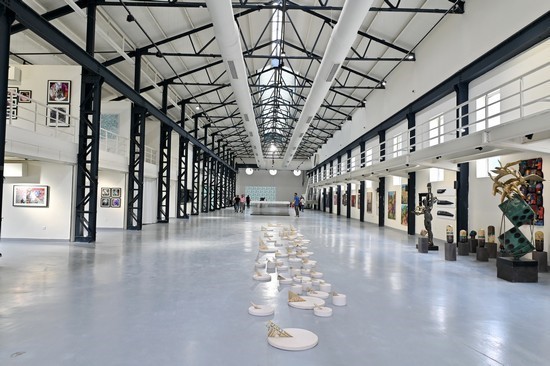
The works on display in
The Hangar, Ras Al-Ain, said
curator Seung-Ah Lee, address, through “different artistic interpretations,
cultural context, and personal experiences,” the manner in which artists “break
and dissolve the borders”, which are “not just a demarcation of lands, but
connote that between individuals, cultures, and societies”.
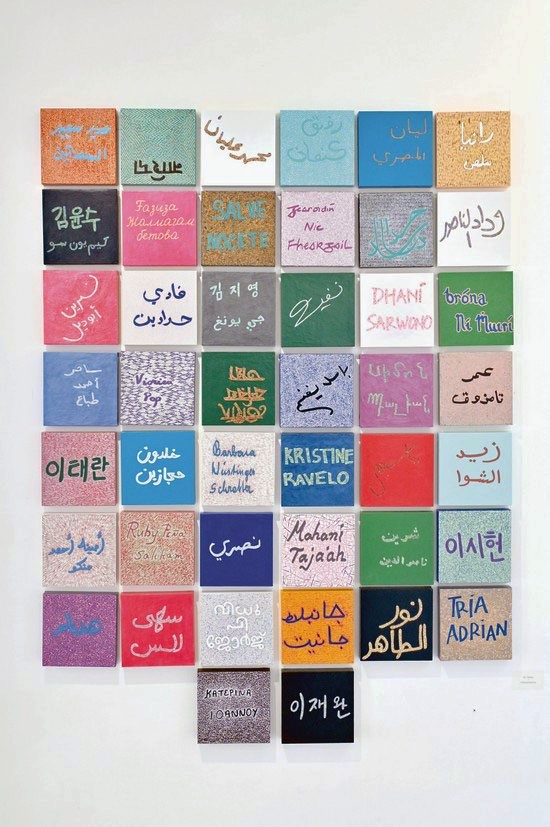
The mammoth task entailed in getting and exhibiting
the works of all the artists must have been facilitated by last year’s partly
similar experience when artist and curator of that show (and incidentally the
wife of the Korean ambassador to Jordan) An Seeun initiated a novel way for
artists to interact.
With the pandemic in full swing, she started a
project that saw Jordanian and Korean artists “who had never met before”
exchange works.
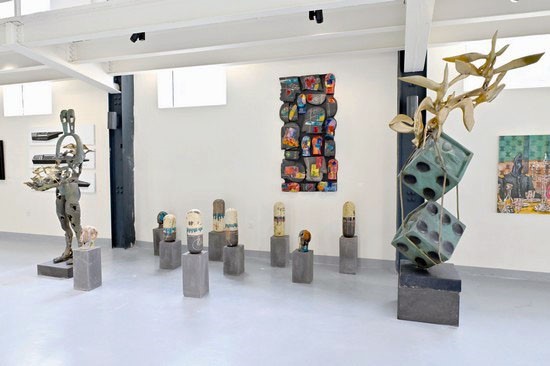
“The byproduct of one artist became a new
construction point for the other. This process of interacting with images and
objects allowed a meaningful exploration between the two cultures without
having to travel. Artists communicated through their artwork, and this process
came to light last year through three group exhibitions in Seoul and Amman,”
said An.
This time, 12 artists from each country exhibit
individual works; seven more from each, picking up from last year’s experience,
participate with joint works under the name “Amman Seoul Anthology”.
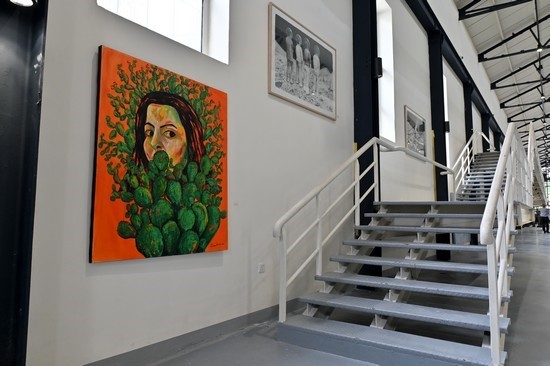
“The collaboration since October 2021, for which the
work traveled a couple of times between the two countries for six months,
culminated into this experimental and ongoing project. Exchanging works again
after their presentation and creating platforms for communication, artists have
been testing the limitation of borders as they ran up against and went beyond
it,” said Lee.
Like last time, partly executed works of the 14
Jordanian and
Korean artists were exchanged, and their counterparts put their
finishing touches and imprint, to present the final product.
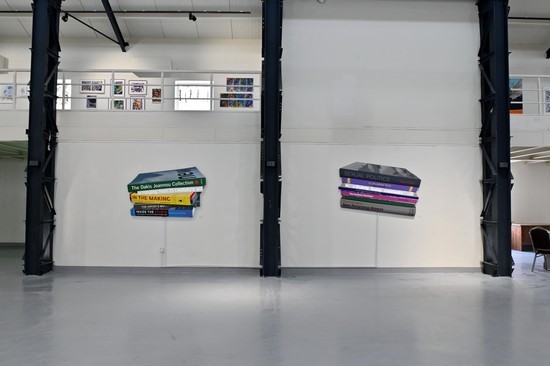
It is amazing what creativity and artistic
sensibility can produce. From abstracts Ghadeer Saeed creates together with
Jung Choulgue, Kim Hyunsoo, or Lee Jueun, Fadi Haddadin with Lee Jueun, Dodi
Tabbaa with Oh Junghyun, or Jung Choulgue, and Nour Taher with Jeong Chanmin,
to more figurative imagery Dodi Tabbaa creates in collaboration with Choi
Soojung and Wedad Alnaser with Jeong Chanmin, to the exquisitely intricate
works produced by An Seeun with Amina Mango and Ghadeer Saeed and the
delicately sculptural images of Samer Tabbaa and Lee Jueun, these joint works
may be perused on the upper floor of the exhibition hall.
On the main; ground floor, individual contributions
invite contemplation. It is art with a message.
Social concerns, philosophical
pondering, political hints, and gender issues are all present, powerful
testimony to the artists’ involvement in their times and their desire, more or
less manifest, to address problems.
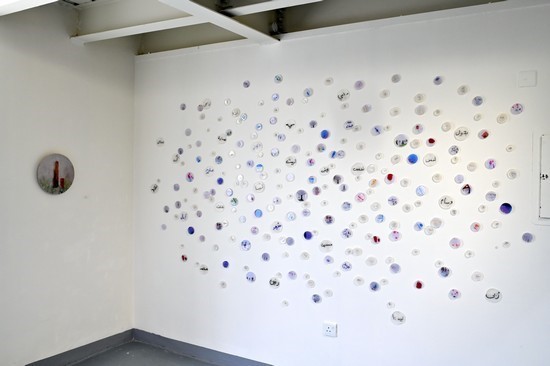
The high-caliber participants’ originality and
mastery creates works that raise questions and will for long linger in the soul
and on the retina.
Paintings, sculptures, installations, and videos
assail the senses. Beyond their sheer artistic value, they give food for
thought and stimulate the intellect.
Like Kang Airan’s “Pile of Books”, a trompe l’oeil
painting/installation of books with an LED panel displaying several phrases. In
the artist’s words, the “book is a medium that provides abundant information
and knowledge but its significance is fading ... Using books as a
representation of knowledge, the work ascribes new meanings to the time and
space in the digital age and leads us to reflect on the time and culture we are
to face”.
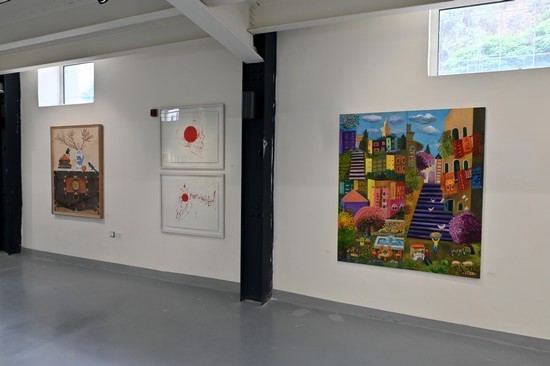
Examining the “operational mechanism of capitalist
society” to “comprehend the eccentric phenomenon of Korean society with
consumerism and exploitation”, like Kira Kim in his videos, studying the
“female form and the complexities of framing women within a patriarchal
society”, like Arda Aslanian in her renditions of strong, proud Armenian women
from her country lore, or muzzled, bridled women attempting to break free, the
world over, seeing
Khaldoun Hijazin’s exploration, at times satirical, of “the
dialectical notions of authority, hegemony, nobility and the holy in history
and contemporary culture”, or Zaid Shawwa’s focus on “the similarities among
humans” who “share the same core”, it is easy to see that artists worlds apart
have similar concerns, “same dreams, hopes and fears”, as Shawwa puts it, and
know no borders.
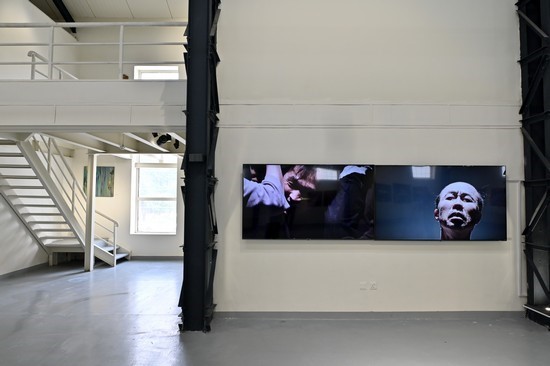
Naqsh collective’s Nisreen and Nermeen Abudail’s
powerful installation —of tens of sundials with limestone base on which shiny
brass gnomons are mounted, mesmerizing with their dazzling, intricately cut
Palestinian embroidery patterns — is inspired by the artists’ love of their
heritage and reflects “the unwavering strength of the Palestinian identity”.
Another story of displacement, that of Aboriginal
Australians, is originally told by Yeon Sook Lee, whose “The Unbearable Lightness
of Being”, an installation of 2,400 white feathers mounted on slender stainless
steel rods “planted” on a black mirror-like acrylic sheet, is an attempt to
“recover” the Aboriginals’ “present and revive the meaning of ‘dreaming’ using
feathers that have been sacred in the Women’s Dance. The movement of light
feathers represents daily lives that straddle the line between the light and
heavy, and the traces of the physical time and space spanning from birth to
death”.
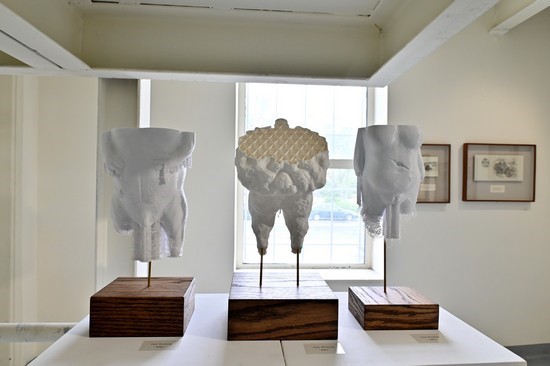
It is a stunning, fragile installation that cleverly
contrasts Ala Younis’ sturdier but a moving presentation of “Nefertiti”, the
Egyptian sewing machine produced in the 1950s “as part of the government’s
effort to nationalize industry and emphasize Egyptian sovereignty… aimed at
empowering Egyptian housewives, offering them the chance to generate income
while their men were away at war”.
Projected against a streaming video that offers
explanations and scenes from old Egyptian movie where the machine figures
prominently, “the project explores personal stories attached to the Nefertiti
and to its time, a disheartening disappointment for the older generation yet a
nostalgic icon from the heyday of nationalist sentiments”, says Younis.
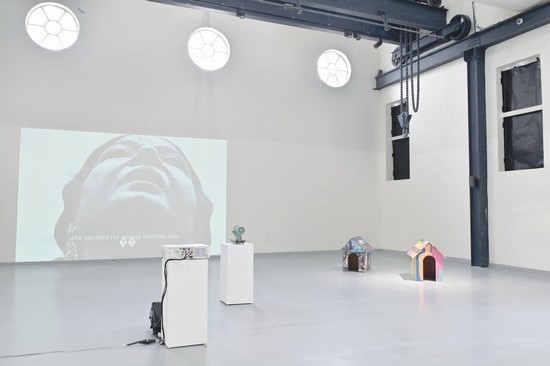
The works abound in the hall, and imagination is
overflowing.
Roh Jinah’s interactive video, Hyungmin Moon’s
recycled art, Sekyung Lee’s painstaking, almost miniature, art for which she
uses human hair, “a storehouse keeping the traces of time and all the precious
memories” to tell “the stories of each person” – an ephemeral medium that
perhaps best illustrates the life’ transiency – are some other works by Korean
artists.
They are beautifully complemented by Jordanian art,
equally imaginative and powerful.
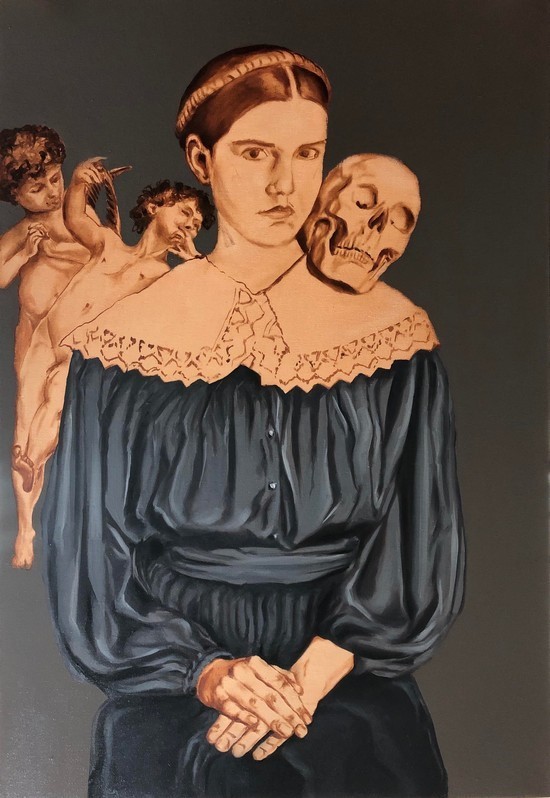
Like Hazem Al’Zu’bi’s sculptures and ceramics,
symbolic works that speak of bondage and freedom, and draw from the country’s
old civilization, Hind Nasser’s “own reality that raises questions rather than
giving answers”, in works that are “a quest about the beginnings, the infinite,
the quintessential, life and her life”, Riham Ghassib’s endearing Amman and
Salt cityscapes in vivid colors — that go perfectly well with Jhe You-Sung’s
colorful fairy-tale world –—Juman Nimri’s search for the meaning of life
through the woman breaking free from among cacti or Fadi Daoud’s real-life
gamblers juxtaposed to a more celestial image of a “Saint”.
Space does not permit a more elaborate presentation
of the works, but viewers have the opportunity to see this outstanding display
until May 29.
Read more Culture and Arts
Jordan News




